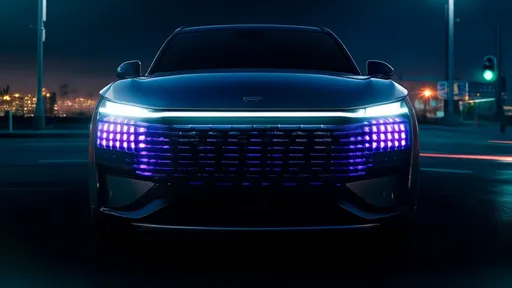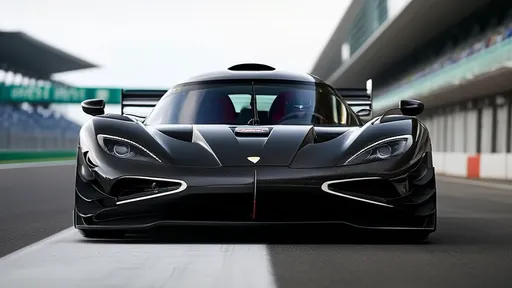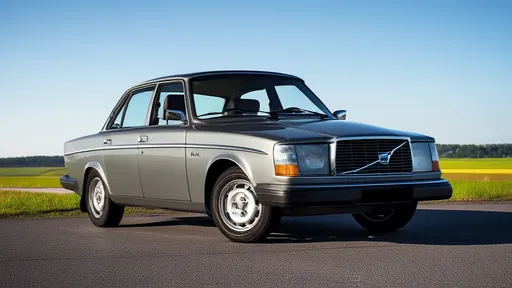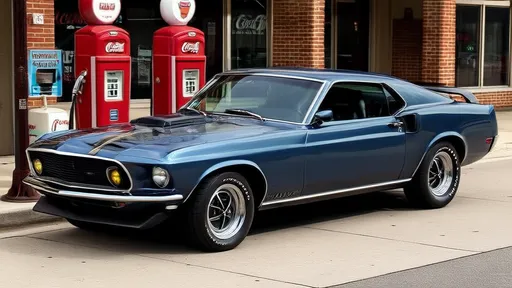The roar of the engine, the sudden surge of acceleration, and the adrenaline rush of a perfect launch—this is what every performance car enthusiast lives for. Yet, behind the scenes of this thrilling experience lies a delicate balancing act between raw power and mechanical preservation. The art of the "launch control" or "power braking" technique, commonly known as "launching," has become a hallmark of high-performance driving. But as exhilarating as it is, the practice places immense stress on a vehicle’s transmission system, forcing engineers to walk a fine line between delivering maximum performance and ensuring long-term durability.
Modern performance cars are equipped with sophisticated launch control systems designed to optimize acceleration from a standstill. These systems manage engine torque, traction control, and transmission behavior to achieve the quickest possible launch without overwhelming the drivetrain. However, even with these advancements, the physics of a hard launch remain unforgiving. The sudden transfer of power from the engine to the wheels generates tremendous forces within the transmission, particularly in the clutch packs, gears, and differential. Over time, repeated aggressive launches can lead to premature wear or even catastrophic failure.
The transmission, often the unsung hero of performance driving, bears the brunt of this abuse. Dual-clutch transmissions (DCTs), for instance, are favored for their lightning-fast shifts and ability to handle high torque loads. Yet, their intricate design makes them particularly vulnerable during launch scenarios. The clutches, which engage and disengage with precision during normal driving, are subjected to extreme heat and friction during a hard launch. This thermal stress can degrade the friction materials over time, leading to slippage and reduced performance. Similarly, traditional automatic transmissions with torque converters face their own challenges, as the fluid coupling can overheat under repeated high-stress conditions.
Manufacturers have responded to these challenges with a range of protective measures. Many performance vehicles now feature built-in safeguards that limit the number of consecutive launches or impose cool-down periods between attempts. Some systems even reduce engine power or shift timing if they detect excessive transmission temperatures. While these precautions may frustrate drivers seeking unlimited launches, they are essential for preventing costly repairs down the line. After all, a transmission rebuild is neither cheap nor convenient—especially in high-performance applications where components are often specialized and labor-intensive.
The pursuit of the perfect launch isn’t just about brute force; it’s about finesse. Experienced drivers understand that modulating throttle input and managing wheelspin can yield better results than simply mashing the pedal and relying on electronics to sort out the mess. Smooth, controlled launches not only put less strain on the drivetrain but can also result in quicker acceleration times by minimizing traction loss. This is particularly true in all-wheel-drive vehicles, where excessive wheelspin can confuse the differentials and torque-vectoring systems, leading to suboptimal power distribution.
Aftermarket tuners and performance shops have also entered the fray, offering solutions that promise both increased launch performance and enhanced durability. Upgraded clutch packs, reinforced gear sets, and improved cooling systems are just a few of the modifications available to enthusiasts looking to push their vehicles further. However, these upgrades often come with trade-offs in drivability or longevity, reinforcing the idea that there’s no free lunch in high-performance engineering. Even with aftermarket enhancements, the laws of physics and material science still impose hard limits on what a transmission can endure.
As automotive technology continues to evolve, so too does the approach to launch control and transmission protection. Hybrid and electric performance vehicles, for example, present entirely new challenges and opportunities. Electric motors deliver instant torque without the need for clutch engagement, potentially reducing wear during launches. However, the sheer force of that torque still poses risks to gearboxes and differentials, necessitating new strategies for durability. Meanwhile, advancements in materials science—such as carbon-fiber-reinforced clutch plates and advanced lubrication formulas—are helping to extend the lifespan of performance transmissions under extreme conditions.
At the end of the day, the relationship between launch performance and transmission longevity remains a compromise. Car manufacturers must cater to customers who demand both thrilling acceleration and reliable ownership experiences—two goals that are often at odds with each other. For drivers, understanding this balance is key to enjoying their vehicles responsibly. While the occasional hard launch is unlikely to cause immediate harm, habitual abuse will inevitably take its toll. Perhaps the true mark of a skilled performance driver isn’t just the ability to launch hard, but the wisdom to know when to hold back.
The next time you line up at a drag strip or an empty stretch of tarmac, remember that what happens in those first few seconds of acceleration is the result of countless hours of engineering and testing. The transmission working silently beneath you is performing a high-wire act, managing forces that could easily tear it apart if not for the careful balance struck between performance and protection. That balance is what allows you to enjoy the thrill of the launch today—and tomorrow, and the day after that.

By /Jun 15, 2025

By /Jun 15, 2025

By /Jun 15, 2025

By /Jun 15, 2025

By /Jun 15, 2025

By /Jun 15, 2025

By /Jun 15, 2025

By /Jun 15, 2025

By /Jun 15, 2025

By /Jun 15, 2025

By /Jun 14, 2025

By /Jun 14, 2025

By /Jun 14, 2025

By /Jun 14, 2025

By /Jun 14, 2025

By /Jun 14, 2025

By /Jun 14, 2025